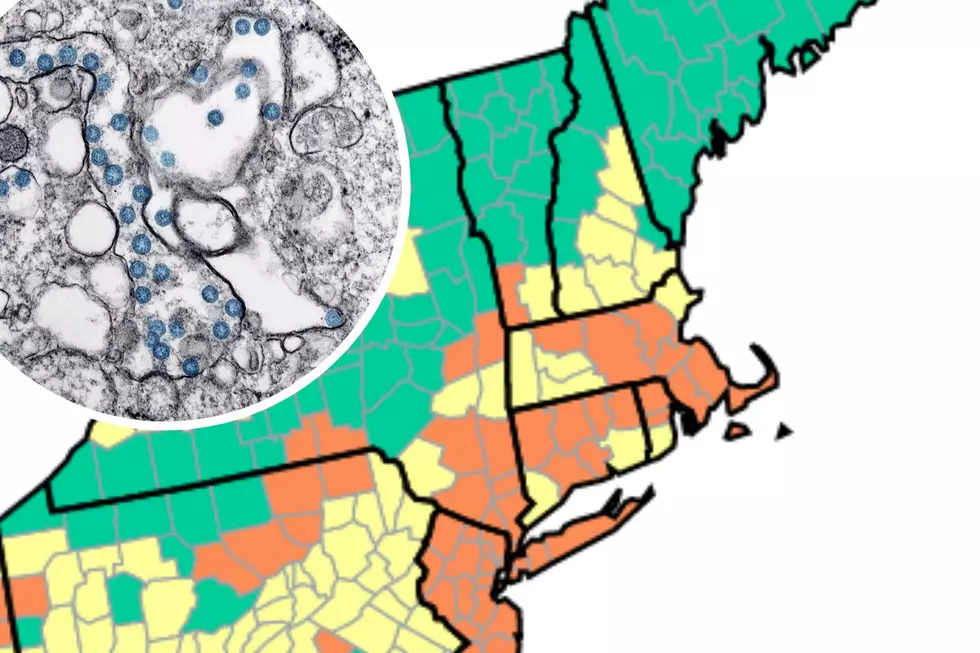
New Year, Same Suggestions to Stop Post Holiday COVID-19 Spread
Coming out of the holiday season, the Seacoast region appears to be holding its own on COVID-19 cases despite headlines about new variants and spikes in the number of cases in the northeast United States.
The state Department of Health & Human Services reported 1,683 cases, 56 hospitalizations, and 13 deaths for the seven-day period ending Wednesday. Most of southern New Hampshire and Essex County in Massachusetts are at medium risk of community spread of COVID-19 through Thursday, according to the CDC's Community Spread map. Strafford County and all of Maine are at low risk.
By comparison, most of the rest of Massachusetts, Connecticut, Rhode Island, the Hudson Valley of New York State, New York City's five boroughs, and New Jersey are at high risk.
CDC data shows the XBB 1.5 omicron variant accounts for the vast majority of its reported cases in New England as of Friday at 76.6%. Andy Pekosz, a professor of Molecular Microbiology and Immunology at the John Hopkins Bloomberg School of Public Health said the latest variant is more transmissible, but it's not causing the same type of surges in overall cases that omicron did when it entered the population last winter.
The numbers in New Hampshire are a far cry from a year ago when there were around 5,500 positive cases reported in New Hampshire at its peak in mid-January.
"We've not yet seen an increase in emergency room visits and admissions related to influenza and COVID," Martha Wassell, Wentworth-Douglass Hosptal's Director of Infection Prevention, told Seacoast Current. "But we anticipate an increase."
Well Prepared for a Spike
Wassell said Wentworth-Douglass' experience with the pandemic since 2020 makes the hospital well-prepared to handle whatever this potential increase brings. The hospital will be looking for an increase in patients in the emergency room for outpatient treatment of respiratory illness. An increase in admissions is usually not far behind.
"Fortunately, we have vast experience in the last two or three years with development of staffing matrices and patient placement to allow for expansion to separate special areas, the hospital, and additional staff where need be. Those plans are in place. The census is reviewed by the directors and leadership of the hospital, and we are ready to implement when we need to," Wassell said.
The message remains the same from Wassell about taking the basic steps for protection against potential outbreak for not only COVID-19, but RSV and the flu, which are both concerns.
"That means hand-washing, wearing a mask in public, avoiding large public congregation. If you start to feel ill, stay home. And whether that means staying home from a party, or staying home from work, just staying home until you feel better," Wassel said. "We recognize these viral respiratory illnesses are quite contagious, and we can all do our part to stop the transmission and keep each other healthy."
It's also not too late to get the COVID-19 vaccine, according to infectious disease physician Dr. David Itkin.
"It's not as though vaccination is the end all be all, we know that vaccines are imperfect. But on the other hand, the risks of the vaccine are fairly trivial in comparison to the upside. Partial protection is better than no protection," Itkin said.
The COVID-19 vaccine and influenza shots can be administered at the same time, according to Wassel.
Precautions Cause Spikes in Flu?
During the course of the COVID-19 pandemic, as seen during the period after the holidays a year ago, cases spike during after people are together for family gatherings, parties, and traveling.
Itkin said that before the pandemic, there was always a seasonal expansion of influenza and respiratory illnesses. After a historically low influenza season in the winter of 2021-22 COVID-19, precautions can partially be blamed for this year's exaggeration of the cycle.
"People were taking masking and distancing more seriously. Because of that, fewer people were exposed over the last two years to influenza, RSV at the same time. And as we let our guard down, we do not have the partial immunity from previous exposures for the last two seasons. Hence, we're dealing with a population that's a little bit more susceptible at this point," Itkin said.
Itkin expects to see less severe breakouts of COVID-19 over the next few years, with some years better than others.
Contact reporter Dan Alexander at Dan.Alexander@townsquaremedia.com or via Twitter @DanAlexanderNH



